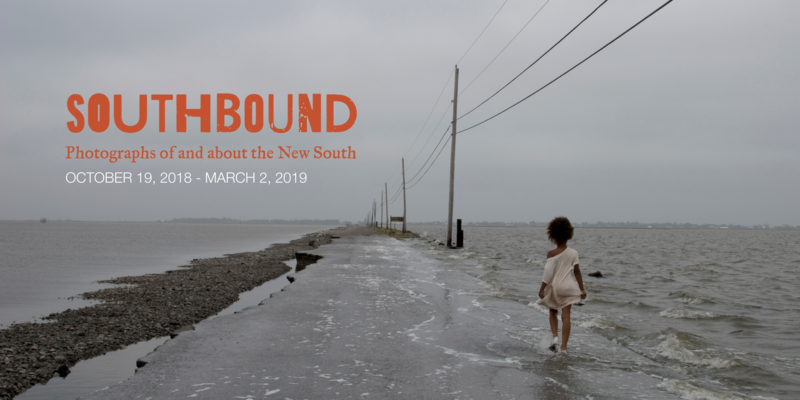
Inside a simple brick building on the corner of Saint Phillip St. and Calhoun St. is a small museum dedicated to doing big things.
On Friday, October 19, The Halsey Institute is launching what might be its biggest endeavor yet – Southbound: Photographs of and about the New South.
Southbound is an ambitious collaboration between Mark Sloan and Mark Long. Sloan, the director and chief curator of the Halsey Institute of Contemporary Art at the College of Charleston, has arranged many engaging photography exhibits during his tenure, and Southbound is sure to be just as amazing. Long is a political geographer and professor of political science at the College. He’s also curator at large and academic liaison at the Halsey.
“The Marks,” as they are affectionately known, both have a litany of accolades and accomplishments to their name, and on Friday, they will add co-curators of Southbound to that list.
This exhibit, which is more than just a compilation of photographs, has been four and a half years in the making. It includes a study of art, geography, architecture, and more.
And it started like most things, with an idea. A question really.
“The South – where does it end? Where does it begin? Is Texas the South? It’s a question. Is West Virginia the South? Who gets to draw those lines,” Sloan asks.
Sloan and Long considered a sense of place and where to draw borders in the New South, but also considered culture, values, and ideology.
“We ended up settling on this idea of the cultural affinities model of the South, which pays no attention to state borders but has more to do with culture. Homogeneity of Culture,” Sloan said.
Today, people move from place to place with more ease, thus the homogeneity of a region is becoming less and less similar.
“That’s one of the reasons we were really fascinated, right at this moment in time, by taking the temperature on the South. The narrative is one that suggests places are becoming more similar over time,” Long said.
Although the Americanization of the world is ongoing, which includes the southern states, Long sees a resilience in the South with regards to the ideas, notions, and values found here.
The photographs, of course, drive a photography exhibit. Sloan and Long started with 600 names of artists and whittled it down to roughly 75 artists. They then visited these artists or asked them to submit a portfolio.
“One of the things that became very clear is that we can only ever present an idiosyncratic slice of the South. There is no possible way to make it comprehensive,” Sloan said.
Alas, they carried on and selected their images. They capped the number of photographers they wanted to display at 50. Then, they ended up with 56. Southbound is made up of 56 photographers, 220 photographs in the exhibition, and 550 photographs in the whole project when you take into account the book and the website.
“We didn’t go in with any preconceived notions about the South except with really one guiding principle and that is that the South exists. The South is real. This place counts for something,” Long said.
Sloan and Long were determined to get as close as they could to a comprehensive snapshot of the South in the 21st century. But, they could only choose images from those that are available.
“What you encounter, of course, is a circumstance where lots of people like to take images in one part of the South and maybe not as many in other parts. The corporate executive doesn’t pop up as much in a fine arts document as she would in commercial photography, for example,” Long said.
Southbound will be on display from October 19, 2018, to March 2, 2019, at The Halsey Institute of Contemporary Art and The City Gallery at Waterfront Park. Visit their comprehensive website for information about the exhibition.
This enormous project was made possible by the staff at the Halsey, a grant from the National Endowment for the Arts and the Robert Mapplethorpe Foundation. The exhibition will debut simultaneously at the Halsey Institute and the City Gallery at Waterfront Park.